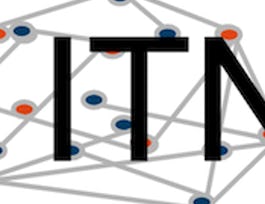Are you interested in predicting future outcomes using your data? This course helps you do just that! Machine learning is the process of developing, testing, and applying predictive algorithms to achieve this goal. Make sure to familiarize yourself with course 3 of this specialization before diving into these machine learning concepts. Building on Course 3, which introduces students to integral supervised machine learning concepts, this course will provide an overview of many additional concepts, techniques, and algorithms in machine learning, from basic classification to decision trees and clustering. By completing this course, you will learn how to apply, test, and interpret machine learning algorithms as alternative methods for addressing your research questions.


Machine Learning for Data Analysis
This course is part of Data Analysis and Interpretation Specialization
Taught in English
Some content may not be translated


Instructors: Jen Rose
44,961 already enrolled
Included with 
Course
(322 reviews)
95%
Skills you'll gain
Details to know

Add to your LinkedIn profile
Course
(322 reviews)
95%
See how employees at top companies are mastering in-demand skills

Build your subject-matter expertise
- Learn new concepts from industry experts
- Gain a foundational understanding of a subject or tool
- Develop job-relevant skills with hands-on projects
- Earn a shareable career certificate


Earn a career certificate
Add this credential to your LinkedIn profile, resume, or CV
Share it on social media and in your performance review

There are 4 modules in this course
In this session, you will learn about decision trees, a type of data mining algorithm that can select from among a large number of variables those and their interactions that are most important in predicting the target or response variable to be explained. Decision trees create segmentations or subgroups in the data, by applying a series of simple rules or criteria over and over again, which choose variable constellations that best predict the target variable.
What's included
7 videos15 readings1 peer review
In this session, you will learn about random forests, a type of data mining algorithm that can select from among a large number of variables those that are most important in determining the target or response variable to be explained. Unlike decision trees, the results of random forests generalize well to new data.
What's included
4 videos4 readings1 peer review
Lasso regression analysis is a shrinkage and variable selection method for linear regression models. The goal of lasso regression is to obtain the subset of predictors that minimizes prediction error for a quantitative response variable. The lasso does this by imposing a constraint on the model parameters that causes regression coefficients for some variables to shrink toward zero. Variables with a regression coefficient equal to zero after the shrinkage process are excluded from the model. Variables with non-zero regression coefficients variables are most strongly associated with the response variable. Explanatory variables can be either quantitative, categorical or both. In this session, you will apply and interpret a lasso regression analysis. You will also develop experience using k-fold cross validation to select the best fitting model and obtain a more accurate estimate of your model’s test error rate. To test a lasso regression model, you will need to identify a quantitative response variable from your data set if you haven’t already done so, and choose a few additional quantitative and categorical predictor (i.e. explanatory) variables to develop a larger pool of predictors. Having a larger pool of predictors to test will maximize your experience with lasso regression analysis. Remember that lasso regression is a machine learning method, so your choice of additional predictors does not necessarily need to depend on a research hypothesis or theory. Take some chances, and try some new variables. The lasso regression analysis will help you determine which of your predictors are most important. Note also that if you are working with a relatively small data set, you do not need to split your data into training and test data sets. The cross-validation method you apply is designed to eliminate the need to split your data when you have a limited number of observations.
What's included
5 videos3 readings1 peer review
Cluster analysis is an unsupervised machine learning method that partitions the observations in a data set into a smaller set of clusters where each observation belongs to only one cluster. The goal of cluster analysis is to group, or cluster, observations into subsets based on their similarity of responses on multiple variables. Clustering variables should be primarily quantitative variables, but binary variables may also be included. In this session, we will show you how to use k-means cluster analysis to identify clusters of observations in your data set. You will gain experience in interpreting cluster analysis results by using graphing methods to help you determine the number of clusters to interpret, and examining clustering variable means to evaluate the cluster profiles. Finally, you will get the opportunity to validate your cluster solution by examining differences between clusters on a variable not included in your cluster analysis. You can use the same variables that you have used in past weeks as clustering variables. If most or all of your previous explanatory variables are categorical, you should identify some additional quantitative clustering variables from your data set. Ideally, most of your clustering variables will be quantitative, although you may also include some binary variables. In addition, you will need to identify a quantitative or binary response variable from your data set that you will not include in your cluster analysis. You will use this variable to validate your clusters by evaluating whether your clusters differ significantly on this response variable using statistical methods, such as analysis of variance or chi-square analysis, which you learned about in Course 2 of the specialization (Data Analysis Tools). Note also that if you are working with a relatively small data set, you do not need to split your data into training and test data sets.
What's included
6 videos3 readings1 peer review
Offered by
Recommended if you're interested in Machine Learning

Coursera Project Network

Coursera Project Network

Wesleyan University

Johns Hopkins University
Why people choose Coursera for their career




Learner reviews
Showing 3 of 322
322 reviews
- 5 stars
56.83%
- 4 stars
25.46%
- 3 stars
7.76%
- 2 stars
4.03%
- 1 star
5.90%
New to Machine Learning? Start here.

Open new doors with Coursera Plus
Unlimited access to 7,000+ world-class courses, hands-on projects, and job-ready certificate programs - all included in your subscription
Advance your career with an online degree
Earn a degree from world-class universities - 100% online
Join over 3,400 global companies that choose Coursera for Business
Upskill your employees to excel in the digital economy
Frequently asked questions
Access to lectures and assignments depends on your type of enrollment. If you take a course in audit mode, you will be able to see most course materials for free. To access graded assignments and to earn a Certificate, you will need to purchase the Certificate experience, during or after your audit. If you don't see the audit option:
The course may not offer an audit option. You can try a Free Trial instead, or apply for Financial Aid.
The course may offer 'Full Course, No Certificate' instead. This option lets you see all course materials, submit required assessments, and get a final grade. This also means that you will not be able to purchase a Certificate experience.
When you enroll in the course, you get access to all of the courses in the Specialization, and you earn a certificate when you complete the work. Your electronic Certificate will be added to your Accomplishments page - from there, you can print your Certificate or add it to your LinkedIn profile. If you only want to read and view the course content, you can audit the course for free.
If you subscribed, you get a 7-day free trial during which you can cancel at no penalty. After that, we don’t give refunds, but you can cancel your subscription at any time. See our full refund policy.

